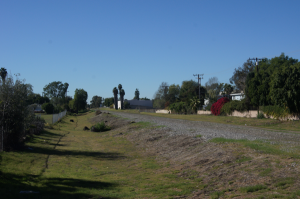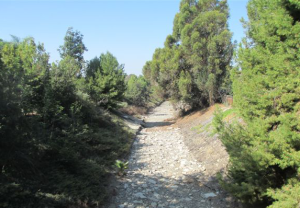 It is generally accepted that a trail is a pathway that is paved or unpaved.
It is generally accepted that a trail is a pathway that is paved or unpaved.
In some cases the types of uses allowed on a specific trail is limited; these are called a single-use trail. For example, the trail may be designated for non-motorized use only or hikers only. Segregated trails separate different user groups from one another. For example, the horseback riders may use a different trail than the hikers and the bikers. There isn’t often enough space to accommodate user-specific trails, which means more often than not a trail is considered “multi-use” where multiple user groups must share the same space. While on the other hand, there are also single track trails where the path is just wide enough for one individual, bicyclist or equestrian at a time. Following proper trail etiquette or trail courtesy helps maintain a safe and enjoyable experience for all trail users.
Below are some of the more common trail types found in Southern California. Please note, generally only one trail type can be assigned to any given trail. Here are a few examples:
- Foot Path: A type of trail mainly only for people on foot (hikers, runners, backpackers, walkers, etc.).
- Bikeways: A specific type of trail for use of mainly by bicyclists.
- Equestrian Trail (or Bridle Path): A type of trail specific to equestrians.
- ADA Trails (or Accessible Trails): A type of trail that meets the standards of the Americans with Disabilities Act for use by people of varying ability levels.
- Rails to Trails (or Rail Trails): A more recently developed type of trails that converts old or abandoned railroad easements to trails. These trails are generally aimed at the hiking and bicycling community.
- Water Trails: Those trails found in lakes, streams, and waterways for individuals using non-motorized equipment like kayaks, canoes, and rafts.
- Fire Roads: Roads that provide vehicular access for land managers and easement holders into natural areas. The public generally does not have access to these roads by vehicle. These roads provide a significant gap in the vegetation allowing fire crews to gain better access to the land and more appropriately fight wildland fires.
- Motorized Trails (or Off-Highway Trails or Jeep Trails): A trail type that is not generally found locally, but allows for motorized use of the trail by dirt bikes and ATVs.
 The National Park Services through its Federal Trail Data Standards have identified a continuum of trail classes with the following characteristics:
The National Park Services through its Federal Trail Data Standards have identified a continuum of trail classes with the following characteristics:
- Trail Class 1: Minimal/Undeveloped Trail
- Trail Class 2: Simple/Minor Development Trail
- Trail Class 3: Developed/Improved Trail
- Trail Class 4: Highly Developed Trail
- Trail Class 5: Fully Developed Trail
There are very specific design standards for facilities used by bicyclists. The United States Department of Transportation has identified a continuum of bikeway classes that have the following characteristics:
- Class I Bikeway (Bike Path): These paths are for exclusive use of bicyclists and pedestrians with limited vehicular interaction.
- Class II Bikeway (Bike Lanes): These lanes are adjacent to streets or highways and have a solid striped lane designating the one-way bike travel.
- Class III Bikeway (Bike Route): These routes share the travel space with both pedestrians and motor vehicles.
Be advised, different land managers or park entities may call trails by different names. As a park visitor and trail user, it is your responsibility to know what trail you are and are not allowed to be on.